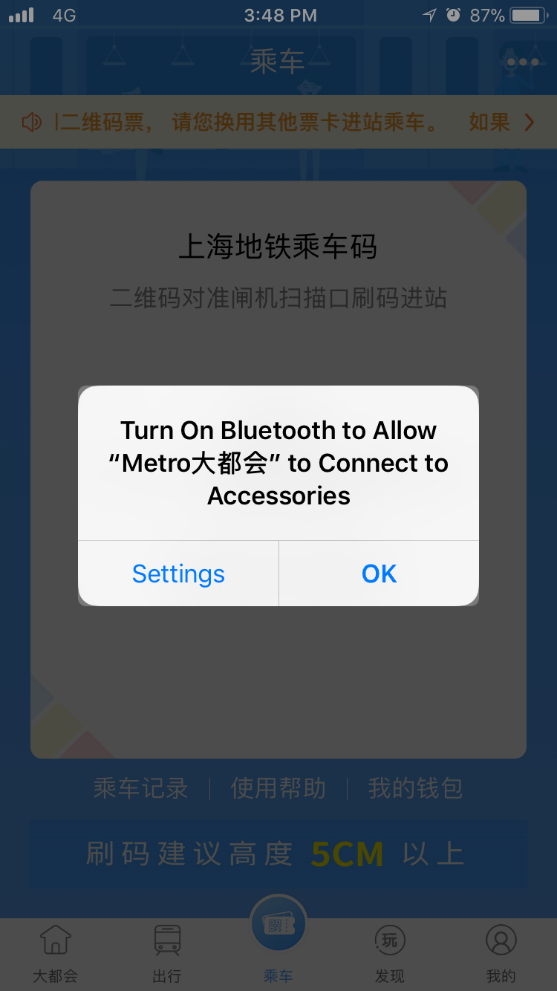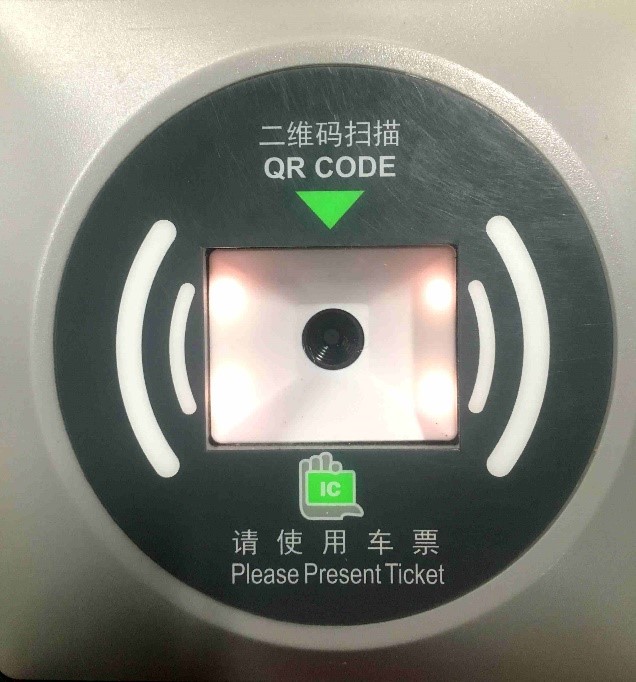Shanghai Metro creates a smart city experience with Bluetooth enabled QR code payment
|
Shanghai Metro is one of the largest metro networks in China, with the highest capacity. In 2016, the total passenger traffic reached 3.4 billion passengers. On 28 April 2017, Shanghai Metro reached nearly 12 million passengers a day for the highest single day of passenger traffic. If all those passengers stood hand in hand, the combined distance could stretch from Shanghai to the West Coast of United States. Incredible!
A new way to pay

Since 20 January 2018, Shanghai Metro has started a new ridership payment option that creates a seamless, smart city experience for passengers. The whole metro network now supports and implements QR code scanning for inbound and outbound metro stations at the gate. Passengers simply download and launch the Metro Daduhui (Chinese for metropolitan) app. The app asks passengers to turn on Bluetooth® to allow the app to connect to accessories as shown in the image below on the left.
Via the Settings button at the bottom of the app page, passengers are prompted to enter their information and access the Transit page. The app then automatically generates a QR code, as shown in the image above on the right.
A passenger’s smartphone can store a number of QR codes from the cloud server via cellular service, 3G or 4G. Once these QR codes are acquired, the smartphone no longer needs access to cellular service to display a stored QR code. The Shanghai Metro gates use Bluetooth connectivity to synchronize the QR codes and determine which code will be used. Then the passenger simply needs to place the generated QR code over the reader to gain access through the gate. Current payment methods supported include Alipay and Union Pay.
A reliable solution in any situation
For the app to generate a QR code, passengers must have Bluetooth® enabled on their smartphone. Unlike traditional online QR Code payments, Shanghai Metro’s use of Bluetooth ensures that the app works every time — even if your smartphone is outside cellular service range.
To test this, I switched my iPhone into flight mode and just enabled Bluetooth connectivity. I was still able to use the app to pass the gate inbound and outbound. That’s the beauty of Bluetooth technology. As long as you’re in proximity of the target device, like a metro gate, Bluetooth ensures connectivity without dependency on any infrastructure.
Why use Bluetooth connectivity

Formerly, Shanghai Metro supported thin IC card tickets, including single tickets, one-day passes, three-day passes, and public transportation cards, which could be recharged and refunded. Changing to a QR code provides passengers with a more seamless, travel experience.
For one, passengers don’t need to worry about account balances. When I used a public transportation card, I sometimes forgot to recharge it. Occasionally, an insufficient balance prevented me from getting into the station. During morning and evening rush hours it was really embarrassing. With the new payment method used by Shanghai Metro, passengers can pay in advance, even if there is no internet connection or if the balance in the account is insufficient.
Also, it is great news for tourists in Shanghai. In the Yangtze River Delta region of China, large-scale cities have their own metro systems, but the metro systems in various cities operate independently. For example, I typically use the Shanghai public transportation card. However, if I go to Hangzhou, 200 km away, I can’t use my Shanghai public transportation card. I have to buy a Hangzhou metro single ticket or Hangzhou public transportation card. But tourists going from Hangzhou to Shanghai just need to download the Metro Daduhui app, enable Bluetooth, and they can commute using the Shanghai Metro system.
Hopefully, in the near future, this QR Code payment will be adopted by more and more Chinese metro systems, making it super easy for passengers to commute in different cities across China.
Bluetooth connectivity in the smart city
From building automation to indoor positioning and location services, Bluetooth technology creates rich, personalized experiences for concert goers, museum lovers, sports fans, and tourists worldwide. Shanghai Metro’s application of Bluetooth® technology is just one more example of how Bluetooth is connecting cities to enhance the visitor experience and improve the quality of life for citizens, businesses, and employees around the globe.